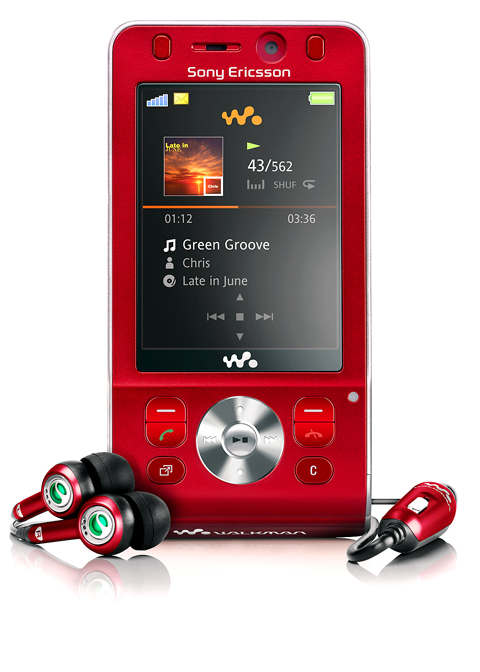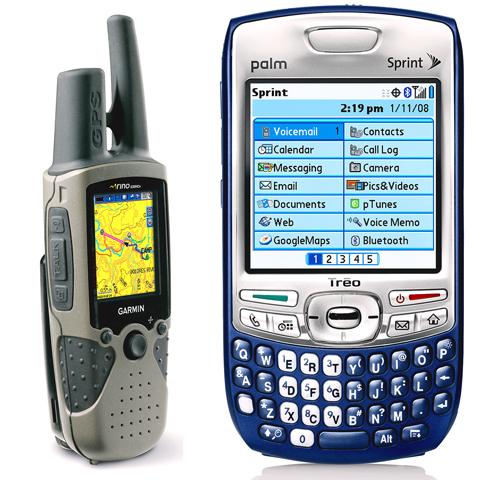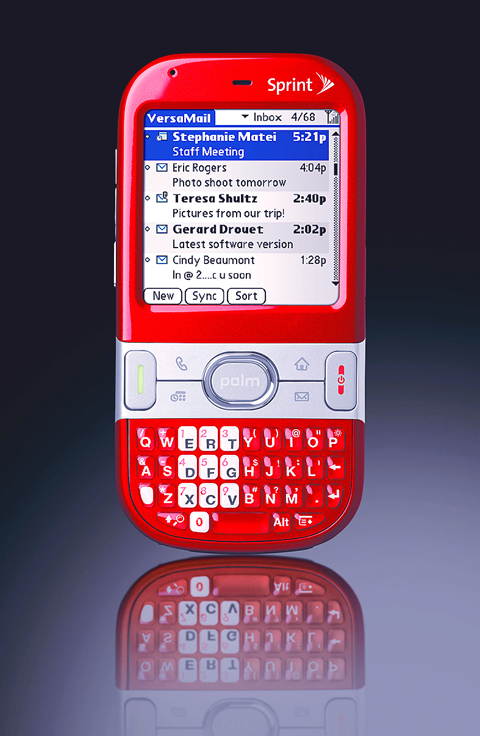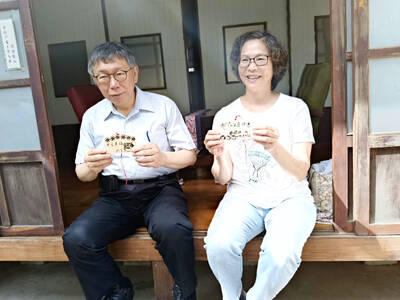One of the most important steps I took in learning Chinese was to find a cell phone that I was able to use properly, in other words one that did not require knowledge of Zhuyin Fuhao (注音符號, or Bopomofo) to type characters. The small, cigarette-length periods of time in the day are perfect for sending an SMS to a Chinese-speaking friend or checking a couple of dozen flash cards, and having a dictionary with you everywhere you go makes learning far more interactive.
Cell Phones and PDAs:

PHOTO COURTESY OF SONY ERICSSON
Sony Ericsson, sogi.com.tw, from NT$2,000
Palm, pdaking.com.tw, roughly NT$12,000
There are few cell phones that can type traditional characters while using the Hanyu Pinyin (漢語拼音) system. After experience with several manufacturers, including Nokia and Microsoft’s Windows Mobile Smart Phones, Sony Ericsson and Palm Treo products come out on top.

PHOTO: NY TIMES NEWS SERVICE
Sony Ericsson’s input system requires knowledge of Mandarin’s tones, but does help by giving a choice of characters that commonly follow the first one. It is also pretty quick at switching between input methods on the fly and includes support for both Bopomofo and Hanyu Pinyn. While it does open the possibility of sending text messages, dictionaries and flash cards are out of bounds, except on the more expensive Symbian OS models.
After using a number of PDAs, or personal digital assistants, the move to a Palm-powered cell phone meant SMS messaging became a core learning resource. Jumping between a text message and dictionary definition, and then loading new words into flash cards makes mobile communication convenient and fun. The Treo’s PalmDragon Chinese-input system supports both written input on the touch screen and phonetic input on the keyboard and also allows installation of third-party software. However, for the more fashionable students of Chinese (they do exist), Palm’s rounded-brick design for the Treo looks ugly and old-fashioned.
For those prepared to wait, Palm recently launched the Centro line of products in the US, which offer improved styling, reduced bulk and lower prices. But these are not yet available in Taiwan. Apple’s iPhone also does not have a confirmed release date for Taiwan, and while it does support display of Chinese characters as standard, it does not yet have an official input system. A small army of amateur enthusiasts are rallying to develop input methods, but it may be best to wait for a formal release of the product in Taiwan or China before risking “bricking” the unit.

PHOTO: NY TIMES NEWS SERVICE
Flashcards:
Supermemo, supermemo.com, US$19.95, Palm and Windows Mobile
Software flash cards help make the tedious activity of rote learning more like a computer game, statistically tracking the characters learned. The downside is that it is easy to slip into the trap of focusing excessively on vocabulary growth, rather than the more important activities of building patterns of words and phrases. The tool that I use is Supermemo, and although it has its downsides it has formed part of my daily routine — indeed, the Chinese-learning community has already gathered vocabulary lists from National Taiwan Normal University’s textbooks, and it’s quite a motivating feeling to be able to “activate” a new chapter from the books as you progress through Chinese-language study.
Dictionary:
Pleco, pleco.com, US$59.95 to US$119.95, Palm and Windows Mobile
Pleco rules the roost when it comes to mobile dictionaries, and is accordingly very popular at institutions like National Taiwan University’s Language Center. At its heart are dictionaries tailored for students of Chinese, which include useful examples set in context. The input method system is also both Pinyin-friendly and tolerant of mistakes when entering phrases. The devil is in the details, though, and the most important detail for me includes the search history that remembers the previous 30 items — fantastic when you are reviewing a conversation from earlier in the day — and single-touch switching between simple and traditional characters; a boon when visiting China.
Several different versions are available, depending on which dictionaries you select to include in the installation, but beginners will probably not need the premium-level dictionaries.
Downloads:
ChinesePod, chinesepod.com
ChinesePod provides a daily downloadable podcast MP3 file that can be loaded onto your iPod or MP3 player. Its 20-minute duration makes it perfect for an MRT commute. Presenters Ken Caroll and Jenny Zhu avoid the dull standard textbooks and instead deliver content that is witty and relevant, whether it is arguing with a taxi driver or discussing the Olympics. Different levels are available, and in addition to a basic free podcast, they also offer subscription-based access to their premium services, which include podcast transcripts and access to discussion forums where users are able to ask for help or exchange advice.
New technologies cannot deliver immediate mastery of the Chinese language, but as part of a routine that includes formal tutoring and informal conversation with native speakers, they can provide increased relevance and the motivational kick we all occasionally need.

Climate change, political headwinds and diverging market dynamics around the world have pushed coffee prices to fresh records, jacking up the cost of your everyday brew or a barista’s signature macchiato. While the current hot streak may calm down in the coming months, experts and industry insiders expect volatility will remain the watchword, giving little visibility for producers — two-thirds of whom farm parcels of less than one hectare. METEORIC RISE The price of arabica beans listed in New York surged by 90 percent last year, smashing on Dec. 10 a record dating from 1977 — US$3.48 per pound. Robusta prices have

The resignation of Taiwan People’s Party (TPP) co-founder Ko Wen-je (柯文哲) as party chair on Jan. 1 has led to an interesting battle between two leading party figures, Huang Kuo-chang (黃國昌) and Tsai Pi-ru (蔡壁如). For years the party has been a one-man show, but with Ko being held incommunicado while on trial for corruption, the new chair’s leadership could be make or break for the young party. Not only are the two very different in style, their backgrounds are very different. Tsai is a co-founder of the TPP and has been with Ko from the very beginning. Huang has

A dozen excited 10-year-olds are bouncing in their chairs. The small classroom’s walls are lined with racks of wetsuits and water equipment, and decorated with posters of turtles. But the students’ eyes are trained on their teacher, Tseng Ching-ming, describing the currents and sea conditions at nearby Banana Bay, where they’ll soon be going. “Today you have one mission: to take off your equipment and float in the water,” he says. Some of the kids grin, nervously. They don’t know it, but the students from Kenting-Eluan elementary school on Taiwan’s southernmost point, are rare among their peers and predecessors. Despite most of

A few years ago, getting a visa to visit China was a “ball ache,” says Kate Murray. The Australian was going for a four-day trade show, but the visa required a formal invitation from the organizers and what felt like “a thousand forms.” “They wanted so many details about your life and personal life,” she tells the Guardian. “The paperwork was bonkers.” But were she to go back again now, Murray could just jump on the plane. Australians are among citizens of almost 40 countries for which China now waives visas for business, tourism or family visits for up to four weeks. It’s